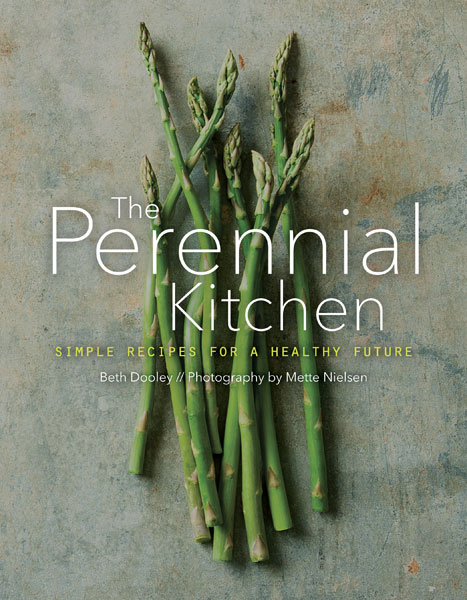University of Minnesota Press, 2021 Hardcover: 27.95
Reviewed by Eimile Campbell

The Perennial Kitchen by Beth Dooley celebrates locally sourced and seasonal ingredients. As Dooley states in the introduction, “The Perennial Kitchen is a cook’s guide to the farmers, ranchers, and processors who are committed to providing flavorful, healthful ingredients that benefit our planet and people.” With recommendations on how to find and select the best ingredients as well as how to cook said ingredients into a delicious meal, The Perennial Kitchen is certain to inspire any Minnesotan cook add more locally sourced grains, nuts and oils to their cooking repertoire.
The book is organized in nine chapters: Perennial Pantry, Milling and Baking, Gardens and Forests, Fields Forever, The Chicken and the Egg, Barnyard and Smokehouse, The Communal Pot, Sweetland, and Preserving the Seasons. Each chapter begins with an explanation of the ingredients used in the chapter, and tips on finding the best ingredients as well as perfecting the techniques. Reading through the chapter introductions, I was struck by the thoughtfulness of eating that this recipe book encourages. Being a graduate student on a limited budget and kitchen space, many of the suggestions for stocking the pantry felt aspirational rather than realistic. Given the time, money and counter space (seriously, I have about a two-ft. by four-ft. space to work with) I would run out and attempt every one of these recipes. (How I long for a day when I can can!) Still, with my limited resources, I was able to make a few of the dishes. Whole Oat Risotto with Squash and Sage (114) quickly became a go-to side item for parties. The unusual ingredients (oats instead of rice!) worked wonderfully well together and have proved a universal hit. Having limited access to robust farmers markets and co-ops, I had to make a few substitutions for some of the recipes. Pork Chops with Black Current Sauce (149) turned out delicious with cherries substituted for the hard-to-find black currents. And Blue Fruit Cheesecake (200) made with Elderberry Ginger Honey Syrup (230) was a hit with blueberries used in place of elderberries.
For every recipe I tired, the instructions were clear and easy to follow, and though some ingredients might be difficult to come by if you don’t live in a place with a food co-op and vibrant farmer’s markets, it’s still an excellent cookbook for any Minnesotan interested in sustainable agriculture and using more organic and locally sourced ingredients.